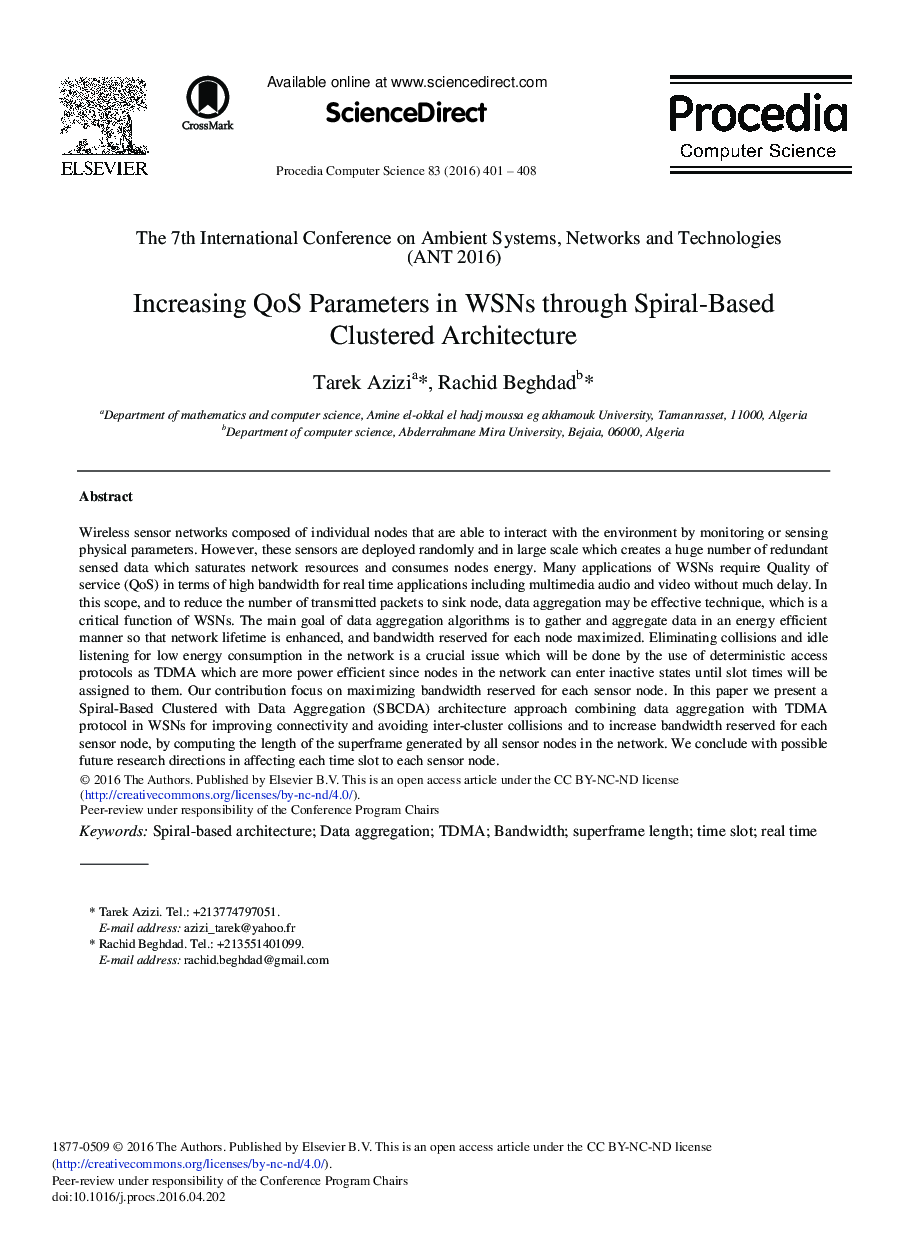| کد مقاله | کد نشریه | سال انتشار | مقاله انگلیسی | نسخه تمام متن |
|---|---|---|---|---|
| 485382 | 703325 | 2016 | 8 صفحه PDF | دانلود رایگان |

Wireless sensor networks composed of individual nodes that are able to interact with the environment by monitoring or sensing physical parameters. However, these sensors are deployed randomly and in large scale which creates a huge number of redundant sensed data which saturates network resources and consumes nodes energy. Many applications of WSNs require Quality of service (QoS) in terms of high bandwidth for real time applications including multimedia audio and video without much delay. In this scope, and to reduce the number of transmitted packets to sink node, data aggregation may be effective technique, which is a critical function of WSNs. The main goal of data aggregation algorithms is to gather and aggregate data in an energy efficient manner so that network lifetime is enhanced, and bandwidth reserved for each node maximized. Eliminating collisions and idle listening for low energy consumption in the network is a crucial issue which will be done by the use of deterministic access protocols as TDMA which are more power efficient since nodes in the network can enter inactive states until slot times will be assigned to them. Our contribution focus on maximizing bandwidth reserved for each sensor node. In this paper we present a Spiral-Based Clustered with Data Aggregation (SBCDA) architecture approach combining data aggregation with TDMA protocol in WSNs for improving connectivity and avoiding inter-cluster collisions and to increase bandwidth reserved for each sensor node, by computing the length of the superframe generated by all sensor nodes in the network. We conclude with possible future research directions in affecting each time slot to each sensor node.
Journal: Procedia Computer Science - Volume 83, 2016, Pages 401–408